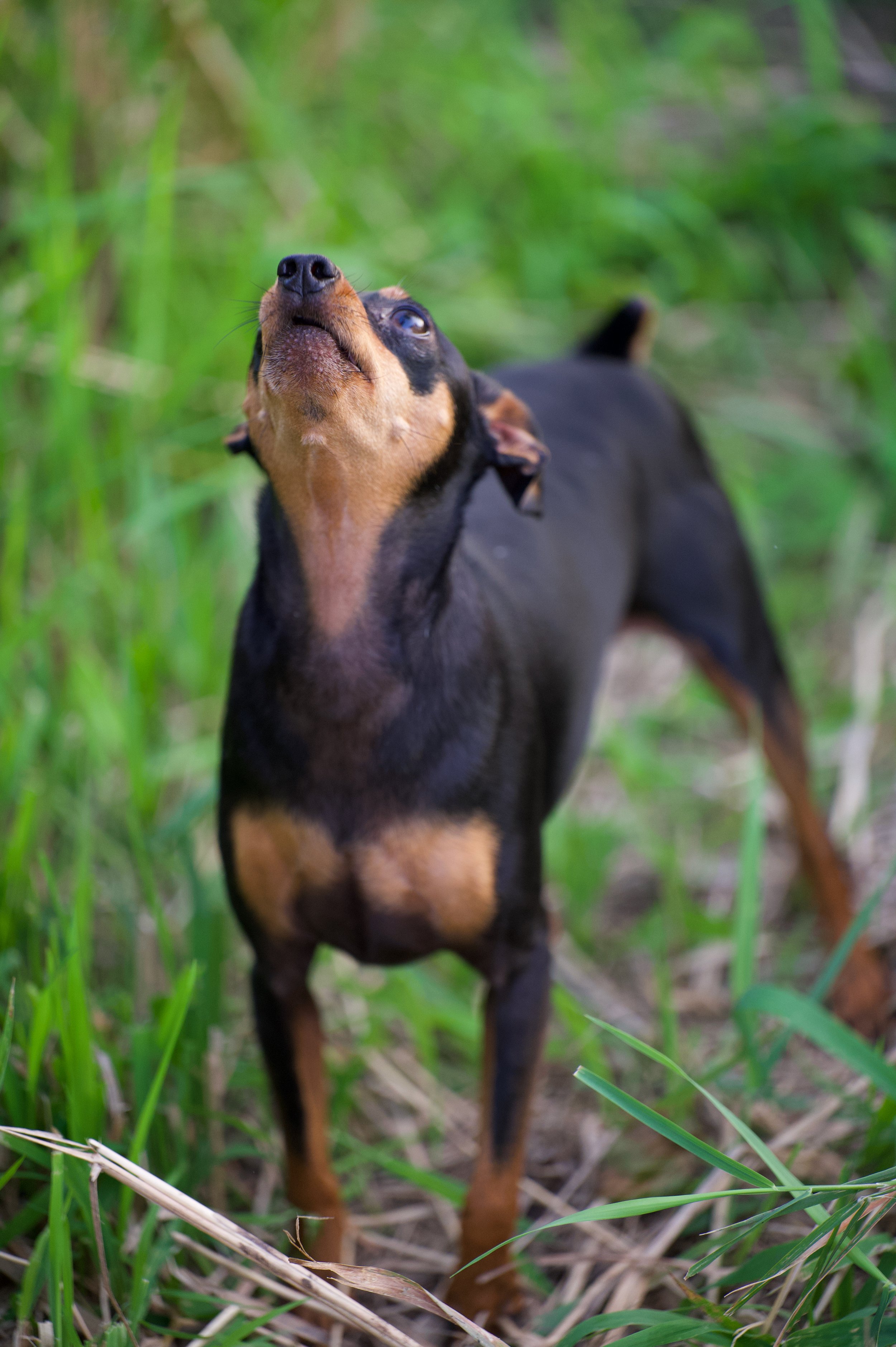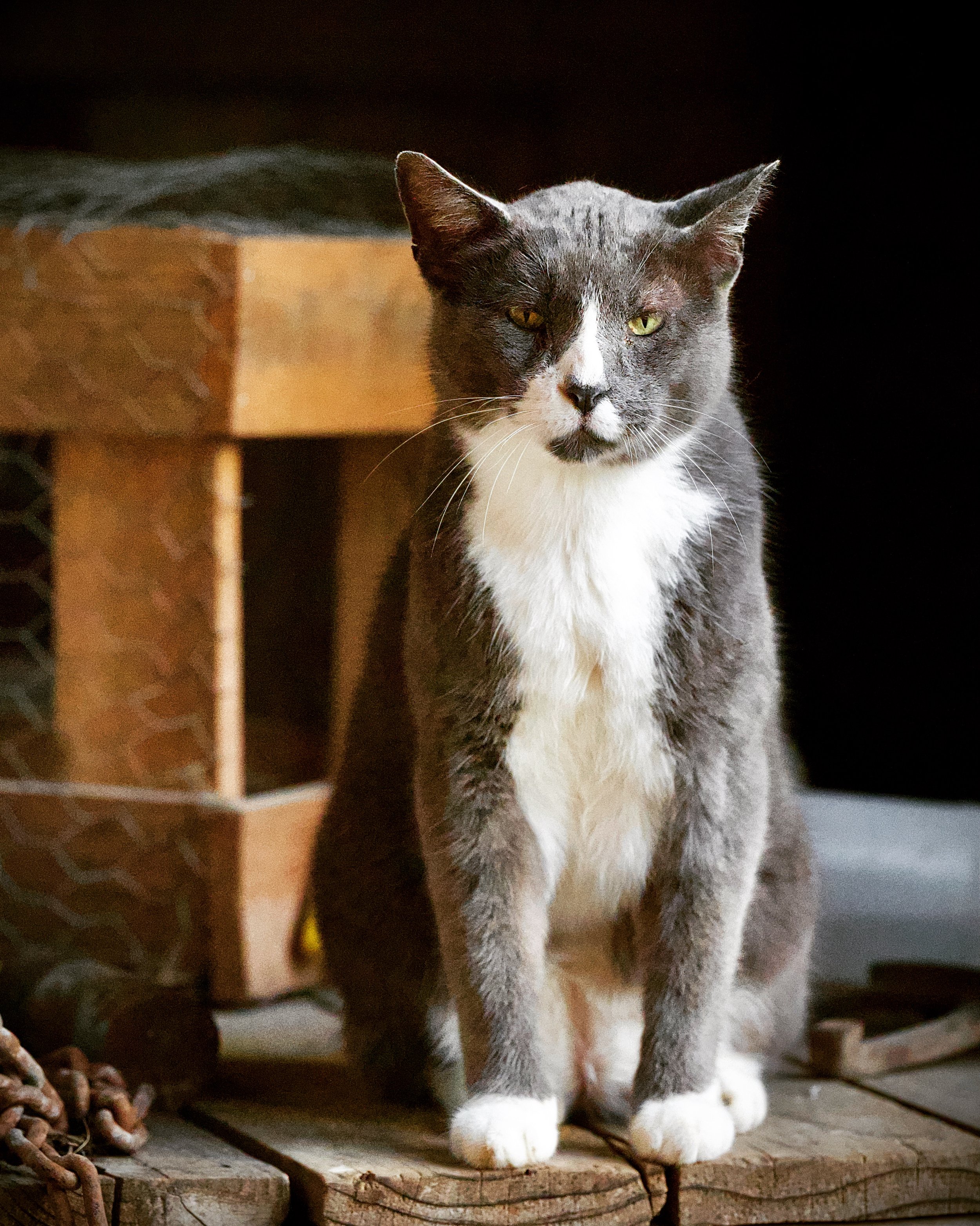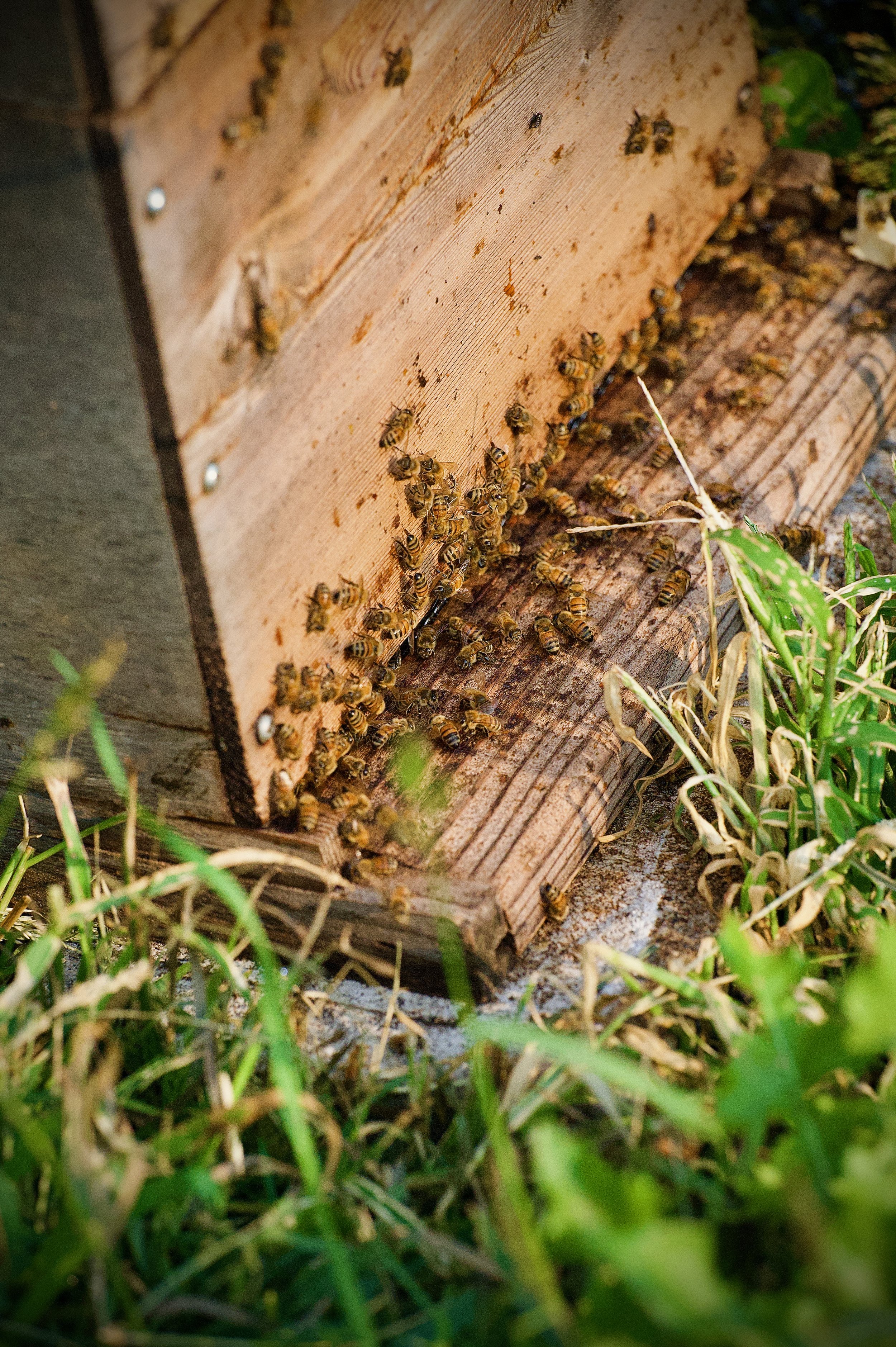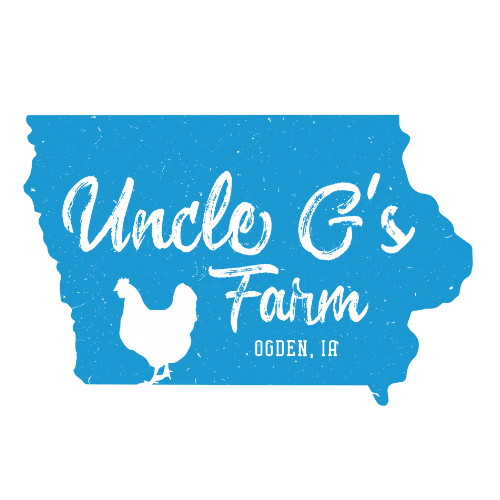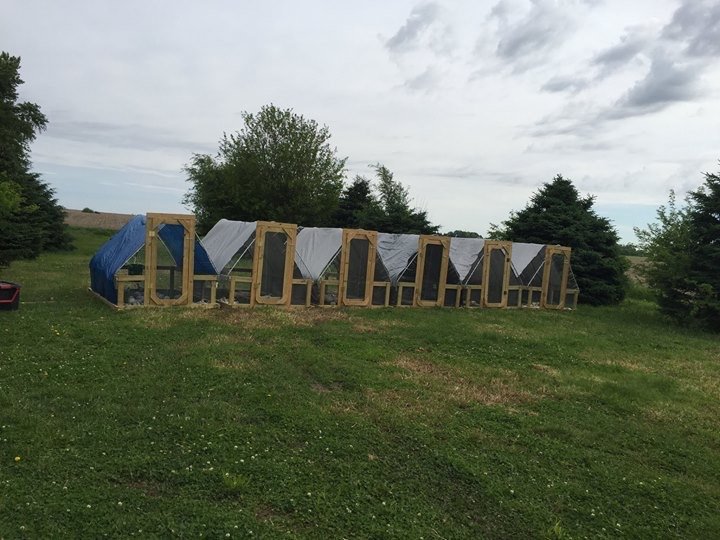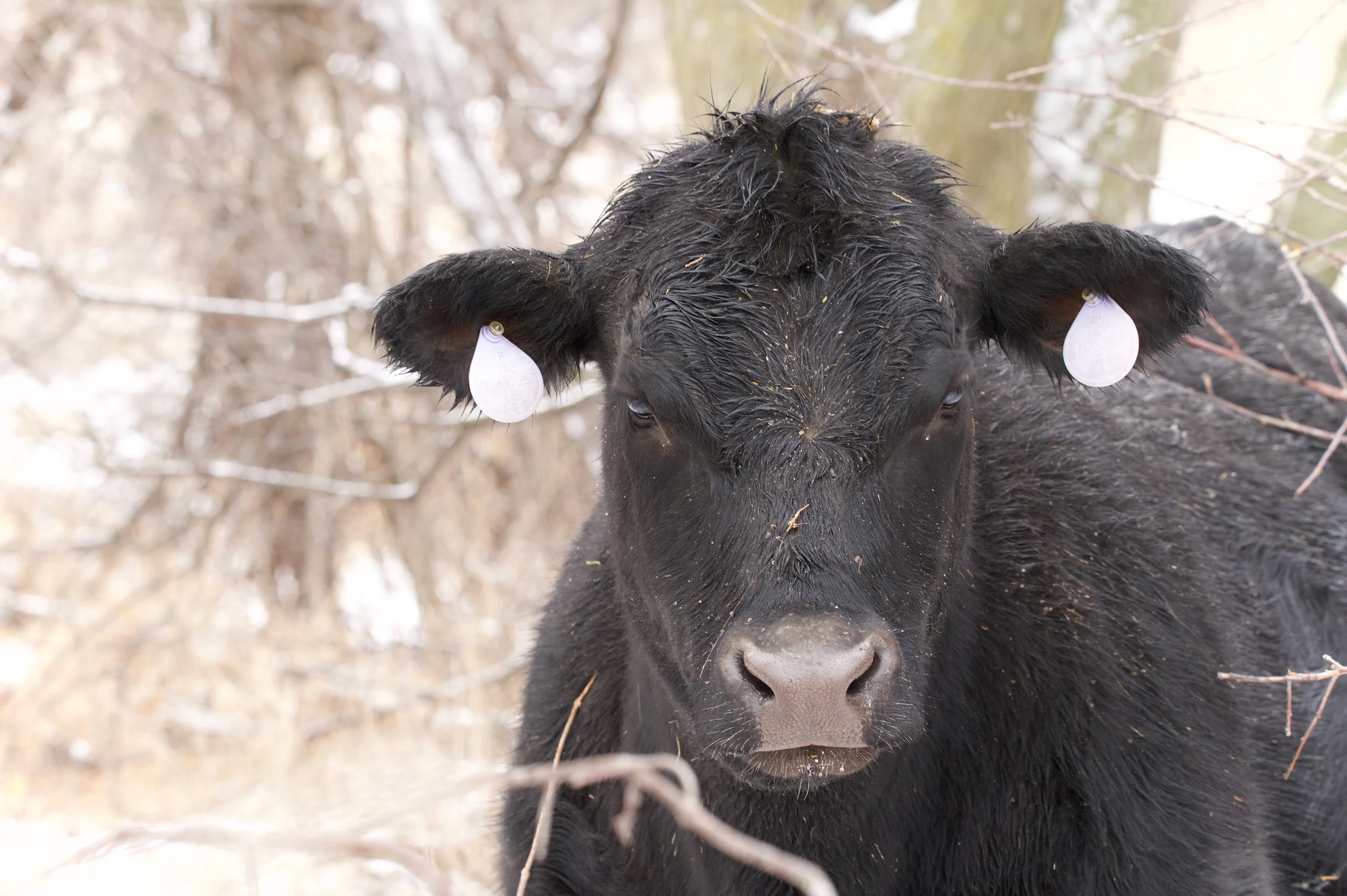
Our Practices
Sustainable Production
On the farm, we found that we love raising animals. We get to provide each animal a great life in addition to providing nutritious food for our family. Keep scrolling to learn more about the animals we raise and how we go about raising them. We are constantly learning and really enjoy sharing what we learn along the way!
In our years of farming since 2016, we’ve worked hard to listen to our animals and the land we live on. The practices we use to raise our animals have evolved from where we started and I’m sure they will continue to improve as we keep learning.
We raise our animals outside in as natural a way as possible.
We raise our animals with extra care since they feed us, too.
The livestock aren’t pets, but we raise them with love and dignity.



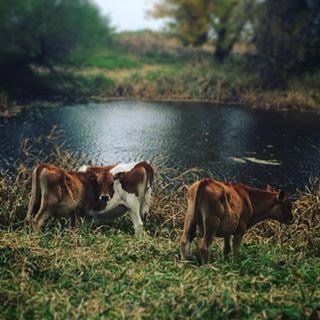
Pigs
Our hogs are raised outdoors in a barn. They are given deep bedding, fresh water, and lots of room to be the best pigs they can be. Given the small size of our farm (7 acres), we are unable to put the pigs on pasture without harming the land. We feel the open barn provides the pigs with the sun, wind, and rain they deserve and allows our pastures to be used for chickens and cattle.
We do not give hormones or routine antibiotics to our pigs. We have a close relationship with our vets and have developed a vaccine program specific to our farm. Our pigs get a mix of hand ground feed as well as feed from our local co-op. They also get fed basil scraps from a local greenhouse and spent grains from a local brewery. We try to keep everything as local as possible.
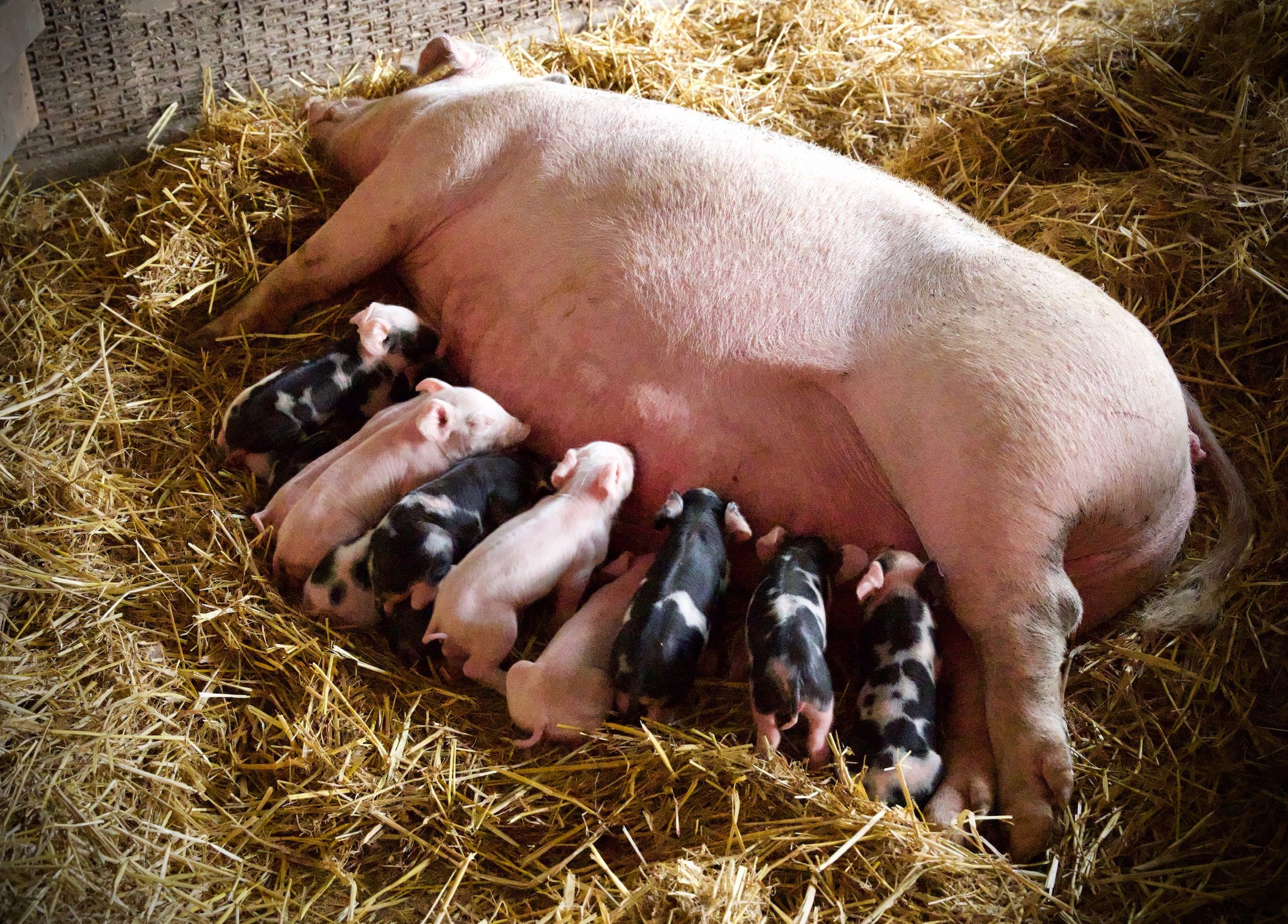

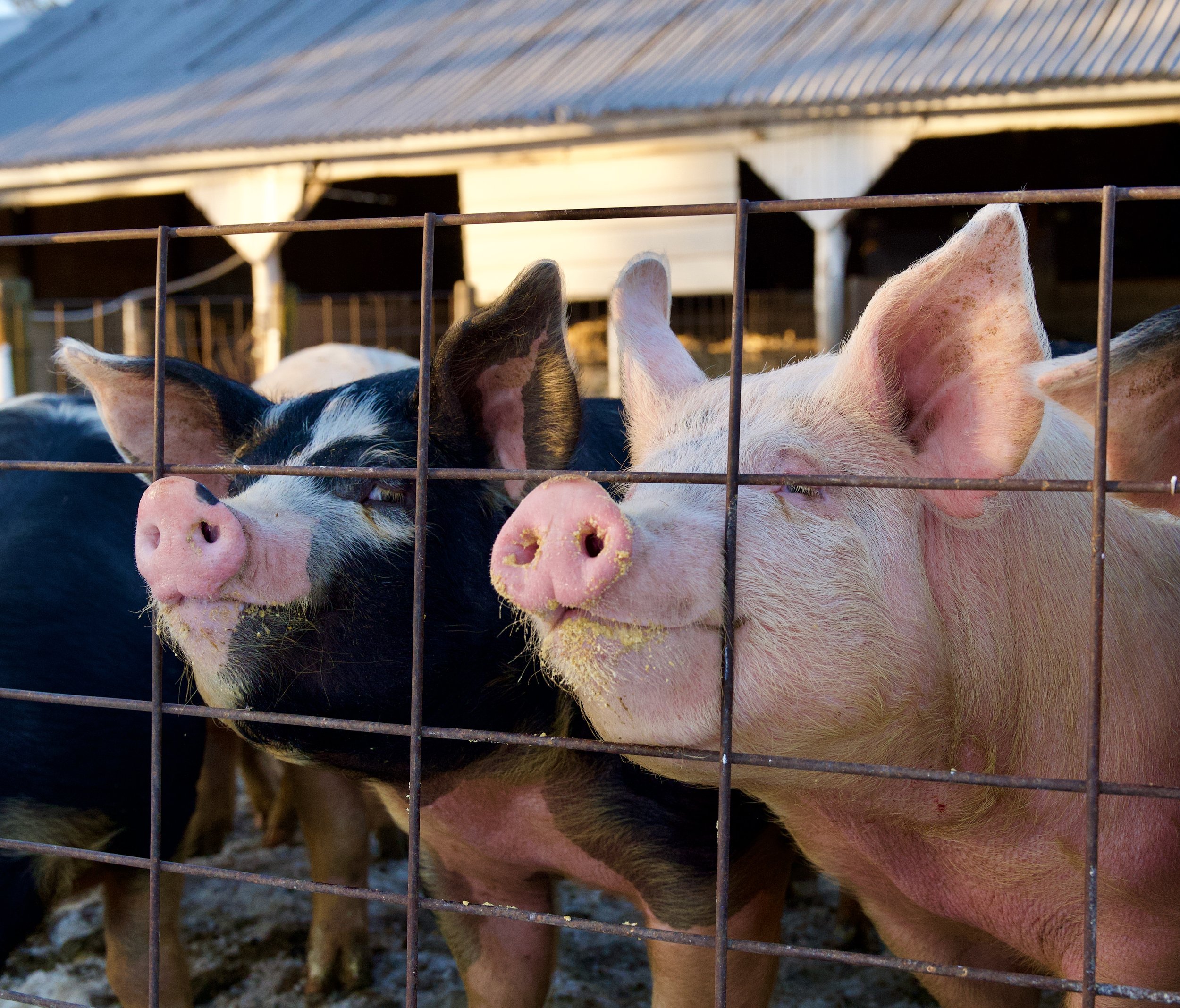

Chickens/Turkeys
Every summer we raise a few hundred chickens for ourselves and our customers. Just like our pork, we take raising our chickens seriously because we eat the meat, too, and don’t want to eat “shortcuts.”
We source our birds from a hatchery in eastern Iowa and butcher them on the farm. They spend their first few weeks of life inside in a "“brooder.” This keeps them safe and protected until they have enough feathers and are big enough to go outside. They are moved daily and raised in “chicken tractors” on pasture where they can eat bugs, enjoy the sun, feel the rain, and peck at the grass. Meat chickens grow incredibly fast and are ready for processing after only 8 weeks. We raise 2-3 batches of birds per year.
Our chickens are not given any hormones or antibiotics. They are given a custom feed made on the farm. Our chickens are Cornish Cross, which is what most people are familiar with. It is what you would buy in the grocery store…but BETTER.
This year we are re-introducing turkeys to the farm. We will raise them like we do the meat chickens. Butchering turkeys is a little more cumbersome so these will be taken to a processor.
We also have hens and roosters that free range all over the property. We collect eggs every day, and occasionally have enough to sell.
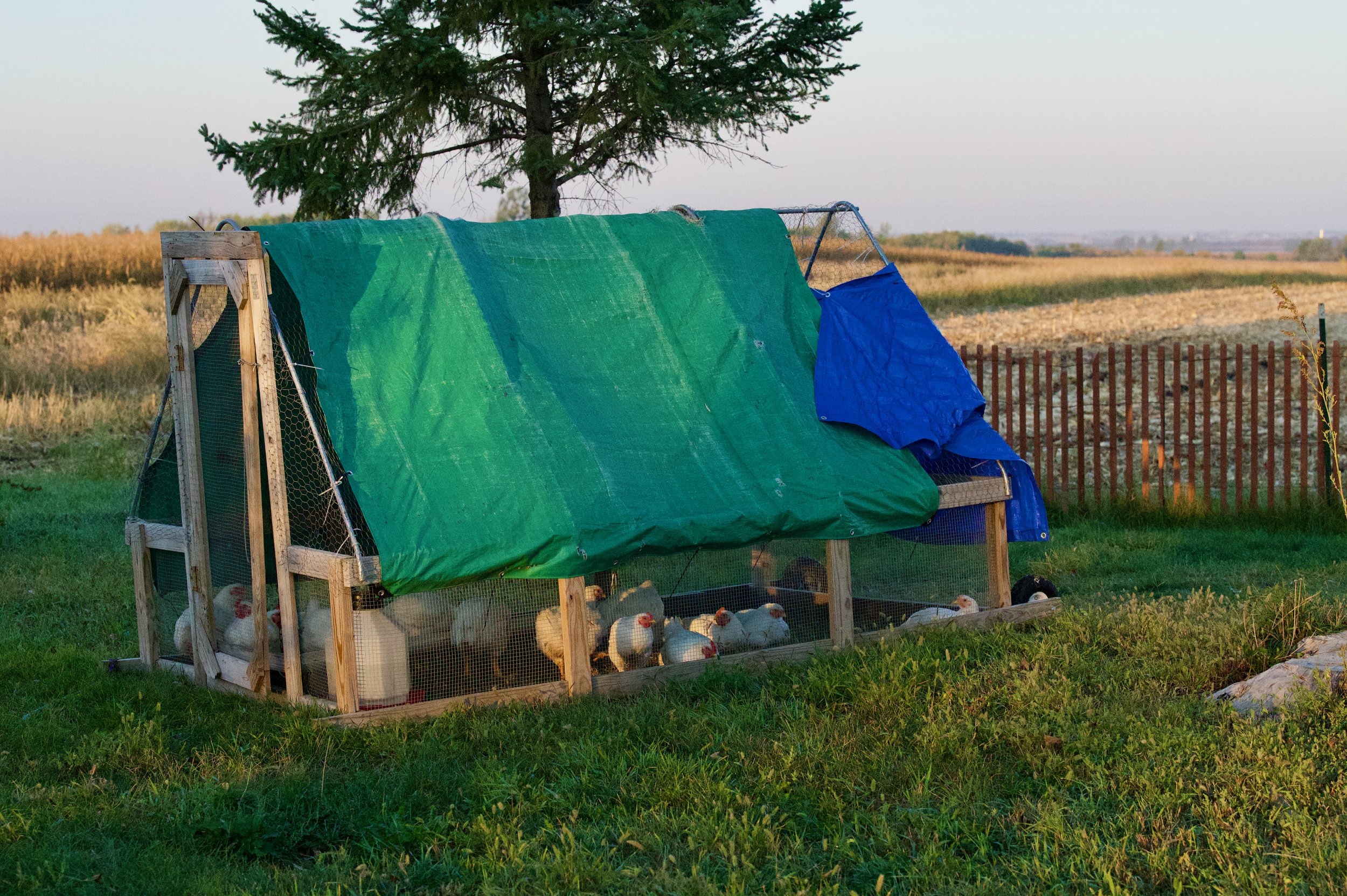

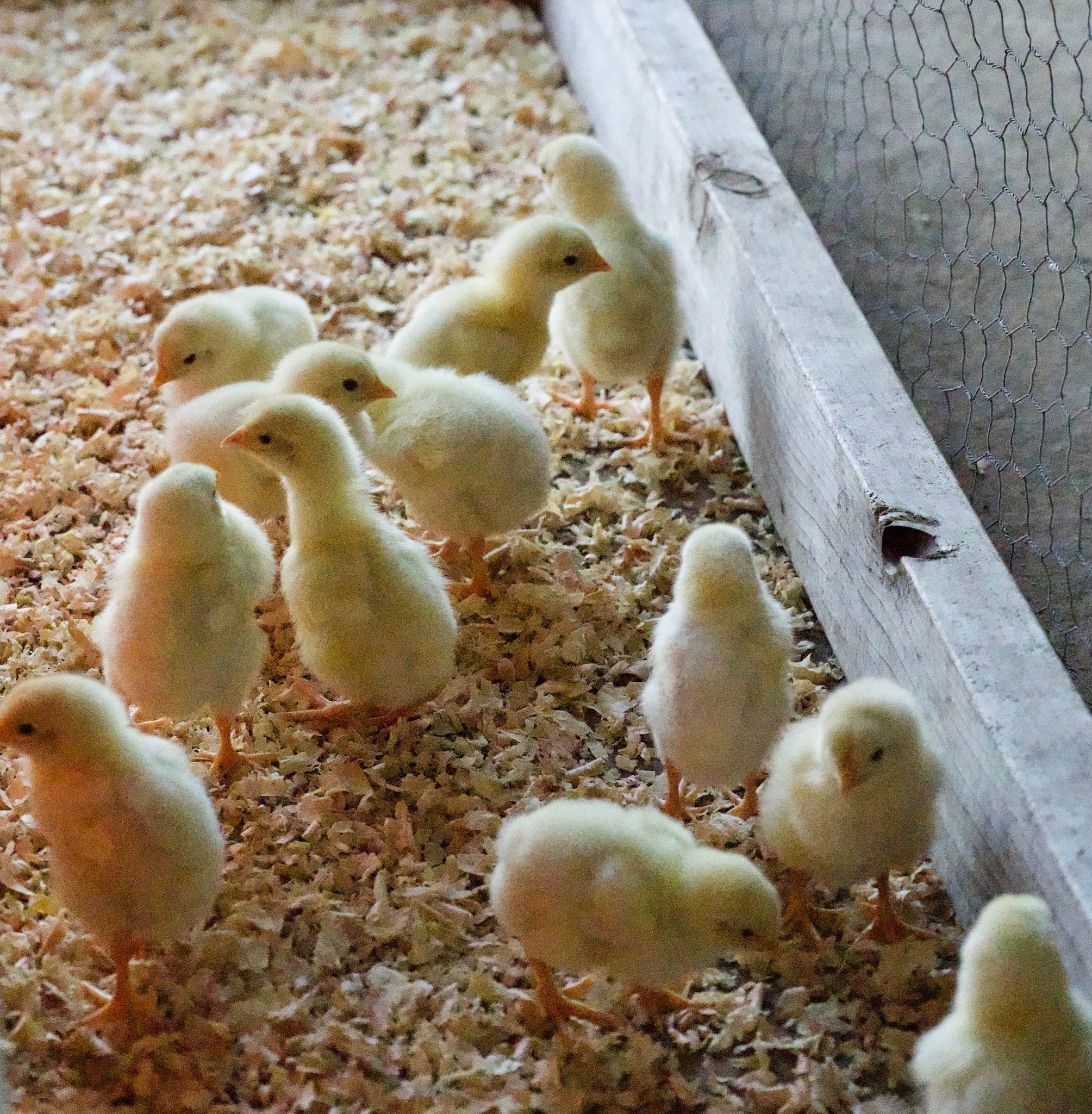
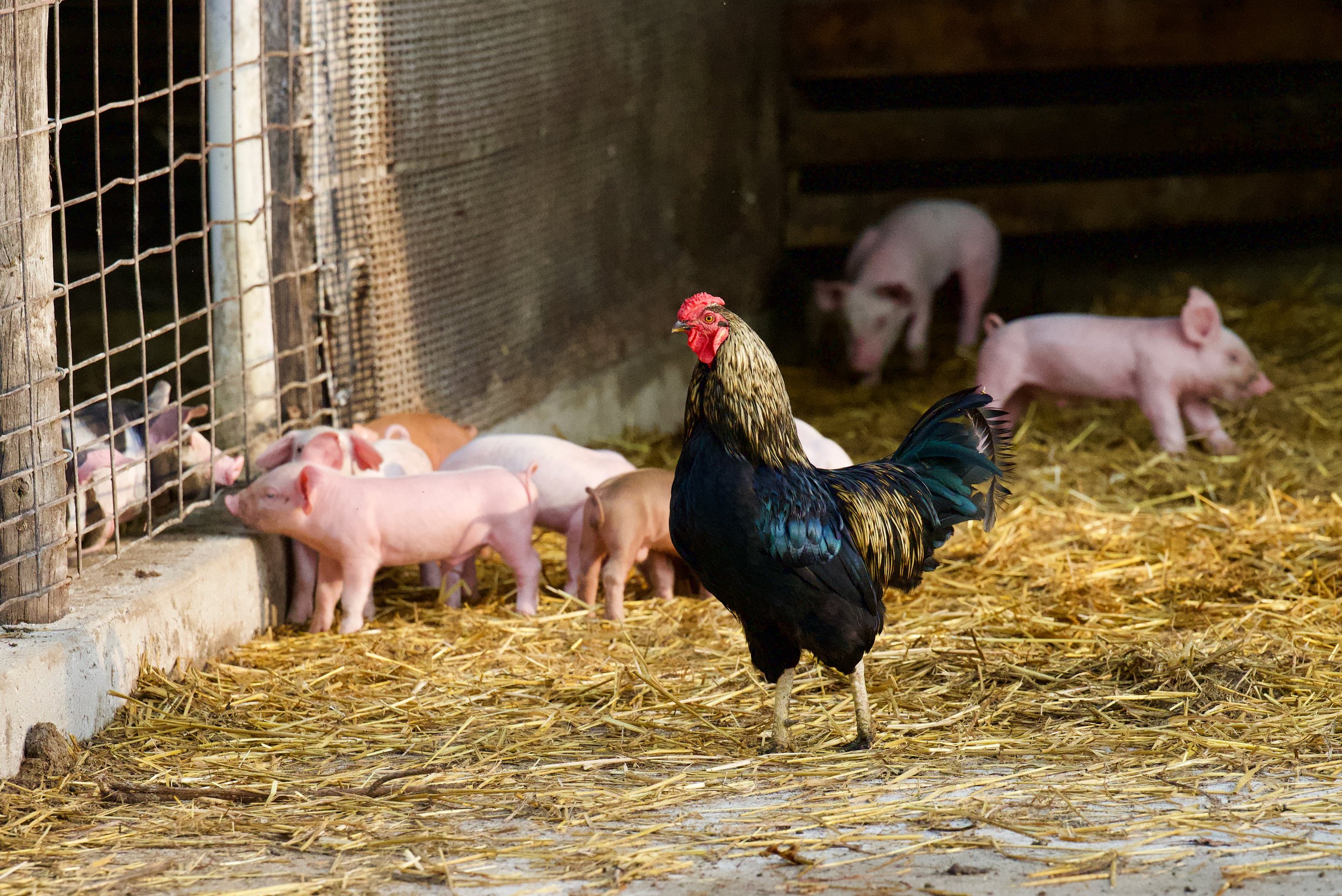
Cows
We have a “herd” of 3 cows. Given the small size of our farm, as noted in the description of our pigs, we don’t have room for more cows. We have a mama and her two calves at any given time. Since it takes 2 years to grow a calf to butchering size, and it takes 9 months for a cow to give birth, we find it works out just about perfect to keep her producing calves so we can share a whole beef with our family. Occasionally we have beef for sale.
We milk the mama cow too. Her name is Stella Blue! We milk once a day and let her calf stay on her for approximately 6 months. Since her calves are Jersey/Angus crosses, they grow bigger than her pretty quickly.
How do we name our cows? Since Stella is named after the Grateful Dead’s Stella Blue, each of her calves is named after a Grateful Dead song. We’ve had Rider (I know you Rider), Jed (Tennessee Jed), and Casey (Casey Joes).
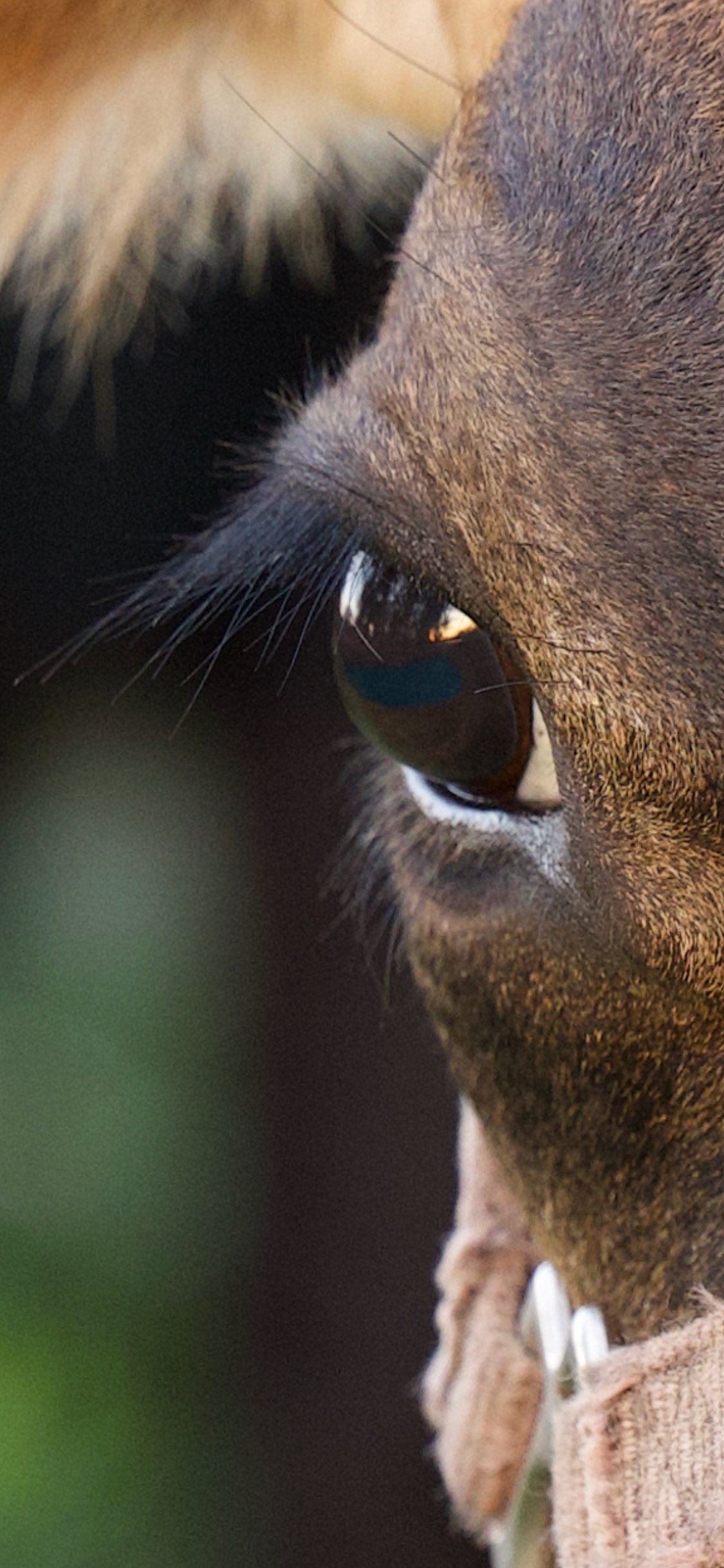


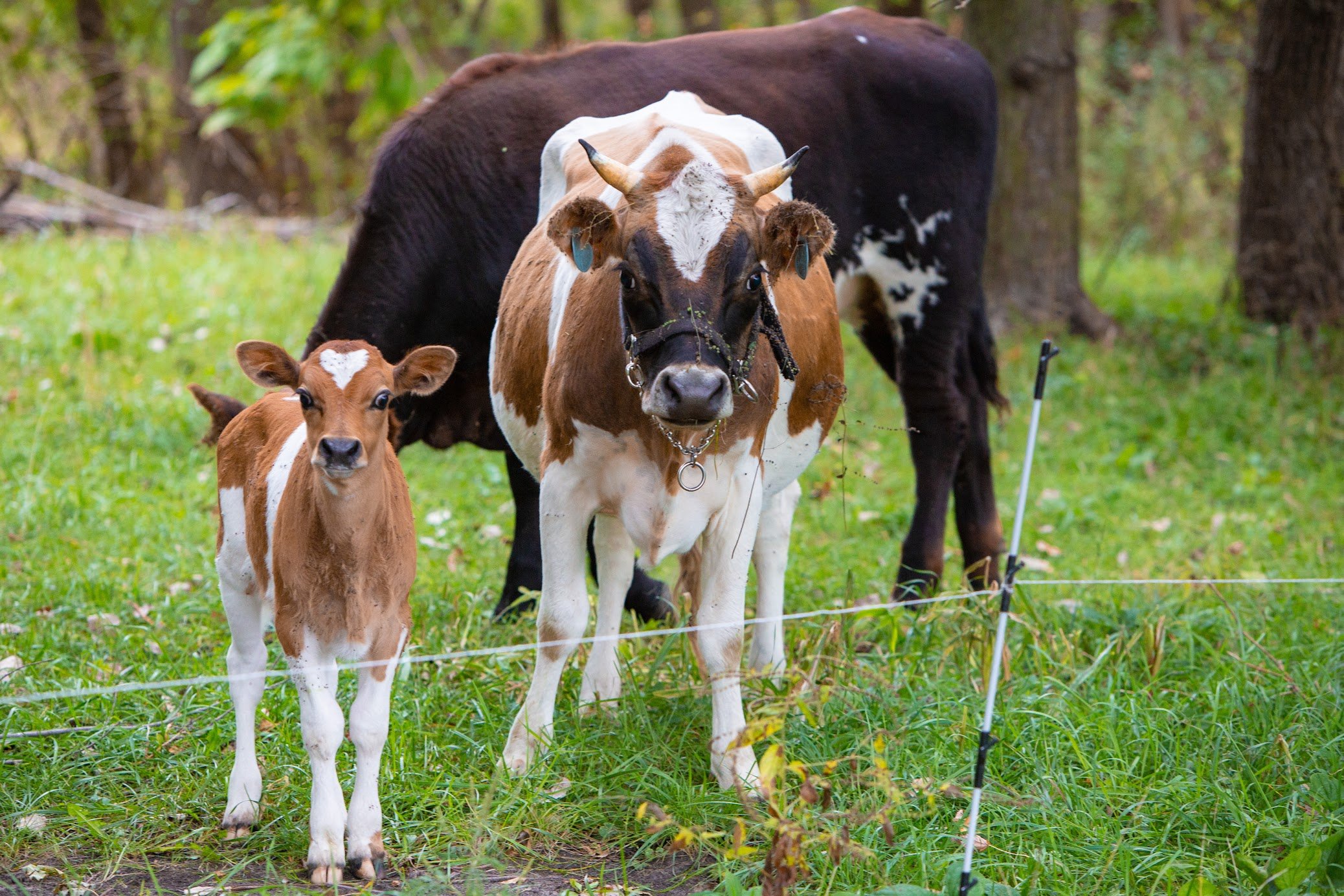
Other Critters
In addition to our livestock we have the requisite cats and dogs on the farm. Each pet has a job on the farm. Our small dogs can get into tight spaces and flush things out. Our Great Pyrenees take it from there. These giants guard the livestock along with the driveway. Our cats control the mouse, rat, and bird population.
We are also incredibly blessed to have a friend who keeps bees at our farm. He is a wealth of knowledge and we learn more about bees each year. Sometimes we have honey, but we can’t guarantee it.
